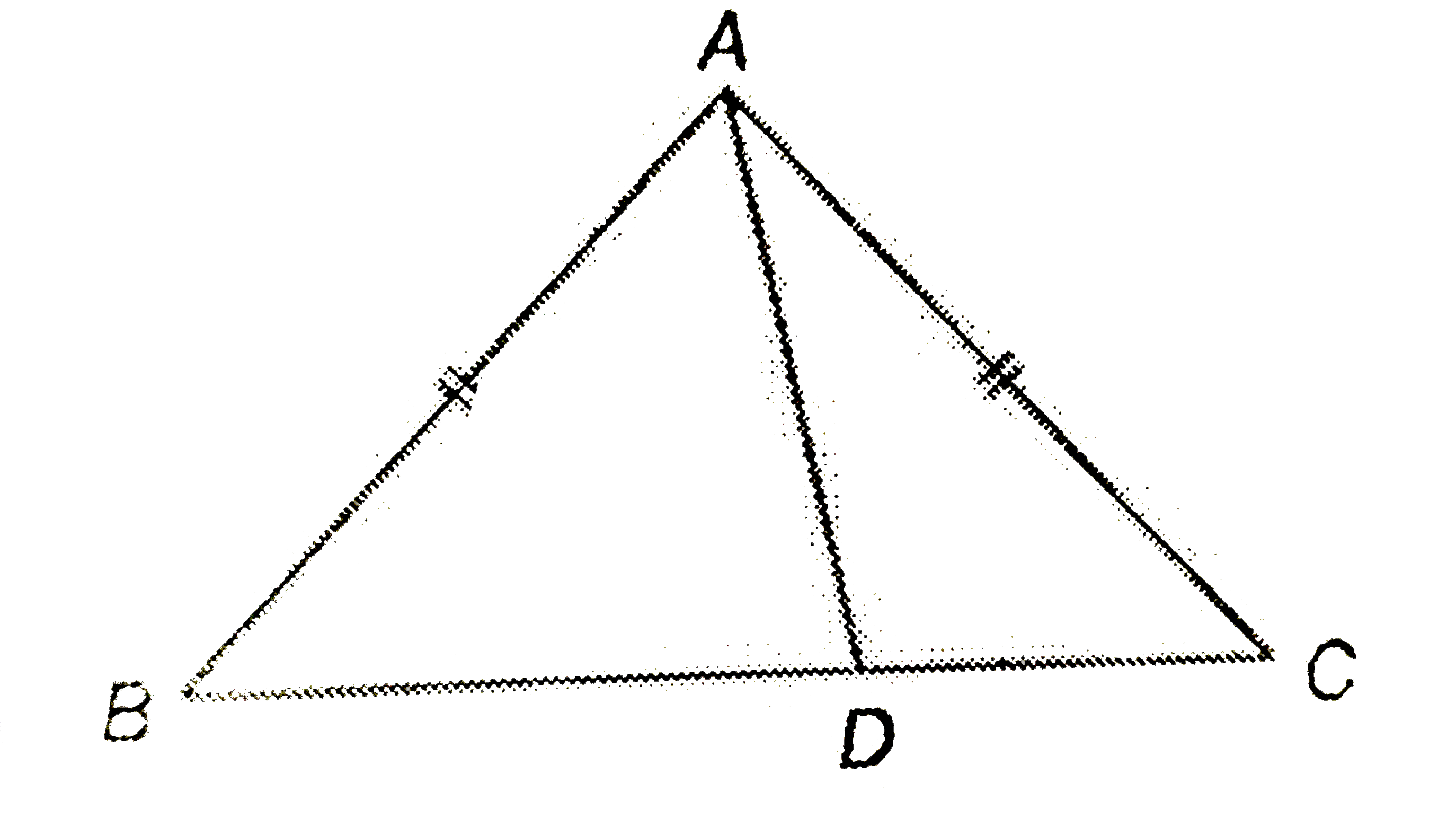If AB, AC are equal sides of an isosceles triangle, prove that tanA2=cotB.
To prove that tanA2=cotB in an isosceles triangle ABC where AB=AC, we can follow these steps:
Step 1: Understand the properties of the isosceles triangle
Given that AB=AC, we know that angles opposite to equal sides are also equal. Therefore, we have:
∠B=∠C
Step 2: Use the angle sum property of triangles
In triangle ABC, the sum of the angles is 180∘:
∠A+∠B+∠C=180∘
Since ∠B=∠C, we can denote ∠B=∠C=θ. Thus, we can rewrite the equation as:
∠A+2θ=180∘
Step 3: Express angle A in terms of angle B
From the equation above, we can isolate ∠A:
∠A=180∘−2θ
Step 4: Find tanA2
We need to find tanA2:
A2=180∘−2θ2=90∘−θ
Now, we can find tanA2:
tanA2=tan(90∘−θ)
Step 5: Use the co-function identity
Using the co-function identity, we know that:
tan(90∘−θ)=cotθ
Thus, we have:
tanA2=cotθ
Step 6: Relate θ to angle B
Since θ=∠B, we can write:
tanA2=cotB
Conclusion
We have shown that:
tanA2=cotB
This completes the proof.
Given that AB=AC, we know that angles opposite to equal sides are also equal. Therefore, we have:
∠B=∠C
In triangle ABC, the sum of the angles is 180∘:
∠A+∠B+∠C=180∘
Since ∠B=∠C, we can denote ∠B=∠C=θ. Thus, we can rewrite the equation as:
∠A+2θ=180∘
From the equation above, we can isolate ∠A:
∠A=180∘−2θ
We need to find tanA2:
A2=180∘−2θ2=90∘−θ
Now, we can find tanA2:
tanA2=tan(90∘−θ)
Using the co-function identity, we know that:
tan(90∘−θ)=cotθ
Thus, we have:
tanA2=cotθ
Since θ=∠B, we can write:
tanA2=cotB
We have shown that:
tanA2=cotB
This completes the proof.
Topper's Solved these Questions
- TRIGONOMETRICAL FUNCTIONS BOOK - ICSECHAPTER - TRIGONOMETRICAL FUNCTIONS EXERCISE - Exercise 4(a)
15 Videos
- TRIGONOMETRICAL FUNCTIONS BOOK - ICSECHAPTER - TRIGONOMETRICAL FUNCTIONS EXERCISE - Exercise 4(b)
19 Videos
- TRIGONOMETRIC EQUATIONS BOOK - ICSECHAPTER - TRIGONOMETRIC EQUATIONS EXERCISE - CHAPTER TEST
6 Videos
Similar Questions
If A, B, C are the interior angles of a triangle ABC , prove that tan(C+A2)=cotB2 (ii) sin(B+C2)=cosA2
View SolutionThe sides AB and AC are equal of an isosceles triangle ABC. D E and F are the mid-points of sides BC, CA and AB respectively. Prove that:
(i) Line segment AD is perpedicular to line segment EF.
(ii) Line segment AD bisects the line segment EF.
View SolutionProve that the circle drawn on any one of the equal sides of an isosceles triangle as diameter bisects the base.
View SolutionProve that the circle drawn on any one of the equal sides of an isosceles triangle as diameter bisects the base.
View SolutionTheorem 7.2 : Angles opposite to equal sides of an isosceles triangle are equal.
View SolutionIf D any point on the BC of an isosceles triangle ABC then prove that AB>AD and AC>AD.

View SolutionIf 2tanB +cotB=tanA, prove that:
2tan(A−B)=cotB
View SolutionD and E are points on equal sides AB and AC of an isosceles triangle ABC such that AD=AE . Prove that B,C,D,E are concylic.
View SolutionIf the base of an isosceles triangle is produced on both sides, prove that the exterior angles so formed are equal to each other.
View SolutionIf ABC is an isosceles triangle with AB=AC . Prove that the perpendiculars from the vertices B and C to their opposite sides are equal.
View Solution
